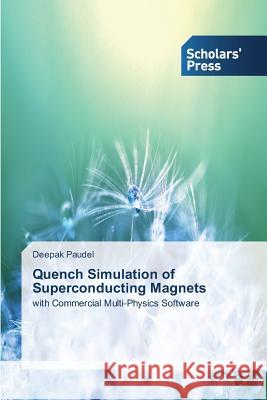Quench Simulation of Superconducting Magnets » książka
Quench Simulation of Superconducting Magnets
ISBN-13: 9783639768824 / Angielski / Miękka / 2015 / 124 str.
The simulation of quenches in superconducting magnets is a multi-physics problem of highest complexity. Operated at 1.9 K above absolute zero, the material properties of superconductors and super-fluid helium vary by several orders of magnitude over a range of only 10 K. The heat transfer from metal to helium goes through different transfer and boiling regimes as a function of temperature, heat flux, and transferred energy. Electrical, magnetic, thermal, and fluid dynamic effects are intimately coupled, yet live on vastly different time and spatial scales. While the physical models may be the same in all cases, it is an open debate whether the user should opt for commercial multi-physics software like ANSYS or COMSOL, write customized models based on general purpose network solvers like SPICE, or implement the physics models and numerical solvers entirely in custom software like the QP3, THEA, and ROXIE codes currently in use at the European Organisation for Nuclear Research (CERN). Each approach has its strengths and limitations, some related to performance, others to usability and maintainability, and others again to the flexibility of material parameterizations.
The simulation of quenches in superconducting magnets is a multi-physics problem of highest complexity. Operated at 1.9 K above absolute zero, the material properties of superconductors and super-fluid helium vary by several orders of magnitude over a range of only 10 K. The heat transfer from metal to helium goes through different transfer and boiling regimes as a function of temperature, heat flux, and transferred energy. Electrical, magnetic, thermal, and fluid dynamic effects are intimately coupled, yet live on vastly different time and spatial scales. While the physical models may be the same in all cases, it is an open debate whether the user should opt for commercial multi-physics software like ANSYS or COMSOL, write customized models based on general purpose network solvers like SPICE, or implement the physics models and numerical solvers entirely in custom software like the QP3, THEA, and ROXIE codes currently in use at the European Organisation for Nuclear Research (CERN). Each approach has its strengths and limitations, some related to performance, others to usability and maintainability, and others again to the flexibility of material parameterizations.











